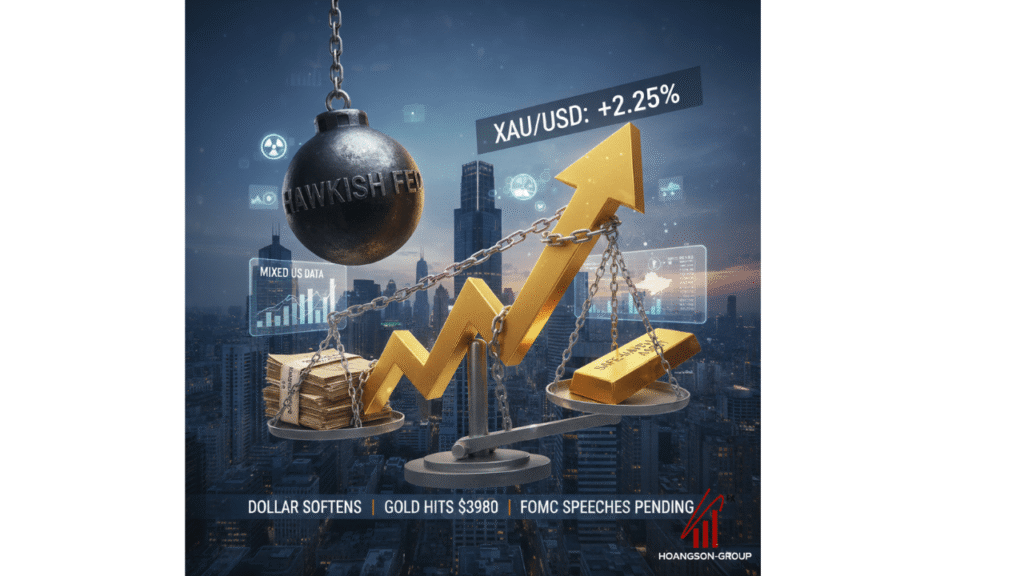Phnom Penh, Cambodia – Gold prices (XAU/USD) showed a positive, albeit cautious, bias for the second consecutive day on Thursday, buoyed by a slight dip in the US Dollar (USD). However, the precious metal struggled to sustain momentum above the $4,000 mark as an increasingly hawkish Federal Reserve (Fed) limited the upside.
Economic Fears Underpin Gold
The primary support for gold comes from deepening concerns over the prolonged US government shutdown, which has now entered its sixth week, setting a new historical record. This unprecedented closure has fueled worries about its potential economic fallout. The nonpartisan Congressional Budget Office has estimated the shutdown could potentially shave between 1.0% and 2.0% off Gross Domestic Product (GDP) in the fourth quarter.
These economic anxieties have interrupted the recent USD rally, providing a crucial tailwind for the safe-haven commodity. Furthermore, ongoing geopolitical uncertainties, including rising tensions over nuclear testing and intensified Russian military activity in eastern Ukraine, have also added to gold’s appeal as a haven asset.
Fed Hawkishness and Data Limit Rally
Despite these supporting factors, gold bulls appear hesitant. The recent hawkish tilt from the Fed has prompted traders to scale back expectations for a December rate cut. This sentiment is limiting deeper USD losses, which in turn, caps any significant appreciation for the non-yielding metal.
Recent US economic data also presented a mixed picture, tempering some economic gloom. The Automatic Data Processing report indicated private sector employment rose by 42,000 in October, significantly beating the estimated 25,000 increase. Separately, the Institute for Supply Management’s (ISM) Non-Manufacturing Purchasing Managers’ Index hit an eight-month high.
Traders are now awaiting speeches from influential Federal Open Market Committee (FOMC) members later in the North American session. These statements will be closely scrutinized for further clues regarding the Fed’s future rate-cut path and overall monetary policy, which will be key in determining the USD’s immediate trajectory and, consequently, gold’s price movement.

